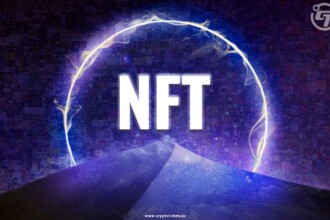Cryptocurrencies have come a long way since their inception with Bitcoin in 2008. What became an obscure form of digital money touted mainly in tech circles has evolved into a $1 trillion market.
Yet despite strong growth and integration in recent years, cryptocurrency usage amongst mainstream consumers continues to fall behind expected adoption rates.
Furthermore, factors like depleting the trust of DeFi users and the growing number of bad players in the crypto space are hindering mainstream adoption of crypto.
The average person on the street still grapples with understanding public ledgers, coin mining, and private keys.
Most businesses have yet to fully adopt popular coins like Bitcoin, Ethereum, or Litecoin directly for payment. While interest exists, converting hard-earned paychecks into blockchain assets remains mystifying for prudent spenders.
The time for change has come if crypto hopes to win over the skeptical masses. Improvements around identity protocols, storage solutions, simplified payments, and understandable exchanges could eliminate barriers deterring engagement. With smarter reforms, cryptocurrencies are primed to secure mainstay status beyond niche coder groups and traders.
Essential Improvements Crypto Space Need
Let us have a look at some of these reforms.
1. Simplifying The User Experience
Of all the potential barriers deterring mainstream cryptocurrency adoption, none looms larger than the general complexity facing newcomers. Between private keys, seed phrases, cold storage, and confusing digital wallet creation, the learning curve simply proves too steep for prudent consumers. Too much complexity kills innovation.
Even tech-savvy demographics feel frustrated at points trying to smoothly buy, sell, or transfer blockchain assets without risking mistakes. To achieve mass engagement, leaders must simplify and streamline cumbersome user experiences surrounding cryptocurrency utilization.
The industry should offer more intuitive wallet interfaces that require only basic personal details, like an email, rather than long hexadecimal public addresses.
Top exchanges should build and prominently feature simplified purchase paths for first-timers, including clear tutorials explaining the basics of blockchain transactions. Leading crypto apps ought to decrease the steps for sending or cashing out coins.
2. Clearer Regulations & Oversight
While decentralization philosophies powering innovations like Bitcoin and Ethereum aim to circumvent institutional control, the reality is that most consumers remain wary of financial assets operating in murky legal grey areas. Calls for crackdowns and outright bans by critics undermine public faith in owning or using crypto.
To shift perception and legitimize cryptocurrencies as conventional, reliable mediums of exchange, world governments must develop clear classification and regulatory frameworks applicable to blockchain networks.
Standards around taxation, reporting, auditing, and compliance strictures would eliminate fears of inadvertent legal violations. Consumers could engage in crypto markets with confidence rather than worrying about penalties.
Moreover, formal oversight and monitoring would help reduce fraudulent behaviour, hacking incidents and other crypto criminal activity frequently highlighted in mainstream coverage.
Rigorous “Know Your Customer” rules would ensure all participants registered verified identities. Enforceable transparency protocols around
transactions could even aid law enforcement in cases of ransomware schemes demanding Bitcoin.
Also Read: 7 Benefits of Crypto Regulations for a Bright Future
3. Robust Identity Verification Processes
High-profile exchange hacks, scam coin schemes, and ransomware attacks dominate public perceptions of rampant criminal exploitation. A lack of clear participant verification enables such behaviours. Restoring faith requires implementing uncompromising identity confirmation protocols.
To achieve mainstream integration, the entire industry must collaborate on universal Know Your Customer (KYC) and anti-fraud standards focused on seamlessly confirming user identities.
Requirements should mandate multi-factor authentication via methods like SMS texts, keyword passwords, and automatic phone verification. IP address tracking would help match locations to claimed residences.
Additionally, strictly enforced policies linking government identification like driver’s licenses or passports to accounts ensure users register under real names rather than anonymous pseudonyms. Advanced biometrics utilizing fingerprint or facial recognition offer another powerful verification layer.
Such collective reforms would massively strengthen cryptocurrency’s defences against various identity exploitation risks, sabotaging wider adoption goals.
Users will enjoy far greater peace of mind knowing all participants underwent similar account vetting procedures. Consistent monitoring further deters those seeking illegal channels.
4. Better Investor Education
Neglected education represents the greatest failure point in this industry’s goal to shift blockchain assets into conventional finance.
Most consumers simply do not grasp the core concepts underpinning crypto technologies enough to feel comfortable investing in savings or making purchases.
To achieve integration, leaders must make consumer education packages a central priority. Companies need to fund comprehensive, engaging informational resources readily accessible to novices.
Content should focus on clearly explaining complex ideas like distributed ledgers, proof-of-work mining, and public-key encryption in simple, graphical terms rather than dense technical jargon.
Top exchanges and wallet providers ought to sponsor free cryptocurrency courses to develop savvy local user bases. Informational tools should include detailed troubleshooting guides and warnings about potential transaction issues to mitigate frustration.
Creative video tutorials could harness recognizable influencers to simplify esoteric topics using analogy and demonstration.
5. Security Enhancements
Security weaknesses represent one of the biggest barriers inhibiting mainstream consumer cryptocurrency adoption.
Whether as large-scale hackings of prominent exchanges or individual account thefts targeting novices, frequent exposure to malicious breaches breeds reluctance to personally entrust resources to such a compromised market.
Thus, crypto leaders must mandate advanced protocols shielding funds, data, and identities using sophisticated encryption and authentication defence measures. Most people feel far more comfortable avoiding cryptocurrencies altogether. These are not merely hypothetical risks.
Over $14 billion in coins were stolen across 340 publicly reported hacks between 2012 and mid-2022 – an average rate of nearly $40 million each month.
To enhance security, all exchanges dealing with substantial assets must utilize cold wallets and other true offline storage solutions rather than merely claiming to do so. These “air-gapped” vaults provide far more formidable protections against mass hacking attempts.
6. More Intuitive User Interfaces
While blockchain assets represent groundbreaking digital innovation, many existing exchanges and wallets sport confusing, unintuitive designs that intimidate newcomers.
Without more thoughtful user experience considerations aimed at simplifying navigation and transactions, mainstream consumers easily get frustrated and abandon crypto exploration entirely.
To mitigate such frustration, developers urgently need to optimize interfaces for maximum beginner clarity. Clean, minimalist layouts with clear explanatory text must replace chaotic pages crammed with esoteric graphs and trading components.
Icons should utilize universally intuitive imagery rather than obscure insider symbology. All critical user paths must sport simplified flows using progressive disclosure to avoid overloading new users initially.
7. Higher Accessibility For Transaction
Without fast, intuitive gateways enabling conversion into and out of national currencies, integrating decentralized coins into daily transactions remains impractical.
To shift the public perception that cryptocurrencies are merely volatile speculative assets rather than usable money, the industry urgently requires improved fiat currency conversion ramps and payment integrations.
Leaders should prioritize partnerships with prominent fintech apps and financial institutions to build pipelines allowing easy mobilization of existing funds into major crypto networks.
Additionally, exchanges need to enable instantaneous transfers and spending without forcing users to manually shift assets in and out of independent wallet accounts before executing transactions. Platforms also need to drastically reduce purchase settlement times from multiple days to near instantaneous confirmation.
Also Read: Crypto Adoption in Latin America and its Impact on Cross-Border Payments
Conclusion
Viable solutions exist if industry leaders collectively summon the initiative to implement key upgrades enshrining accessibility, security, and reliability.
Simplified interfaces, robust identity protections, transparent regulatory guardrails, enhanced investment education, and increased payment flexibility constitute the essential yet surmountable challenges ahead.
With cryptocurrency adoption hovering around just 3% worldwide despite recent prolific value surges, the onus falls upon innovators and reformers to welcome the remaining 97% into this burgeoning new economy.
Savvy investors already recognize monumental latent potential waiting just below the surface. But realizing a fully decentralized future first requires boosting public understanding of what this technology offers societies economically, socially, and politically.







